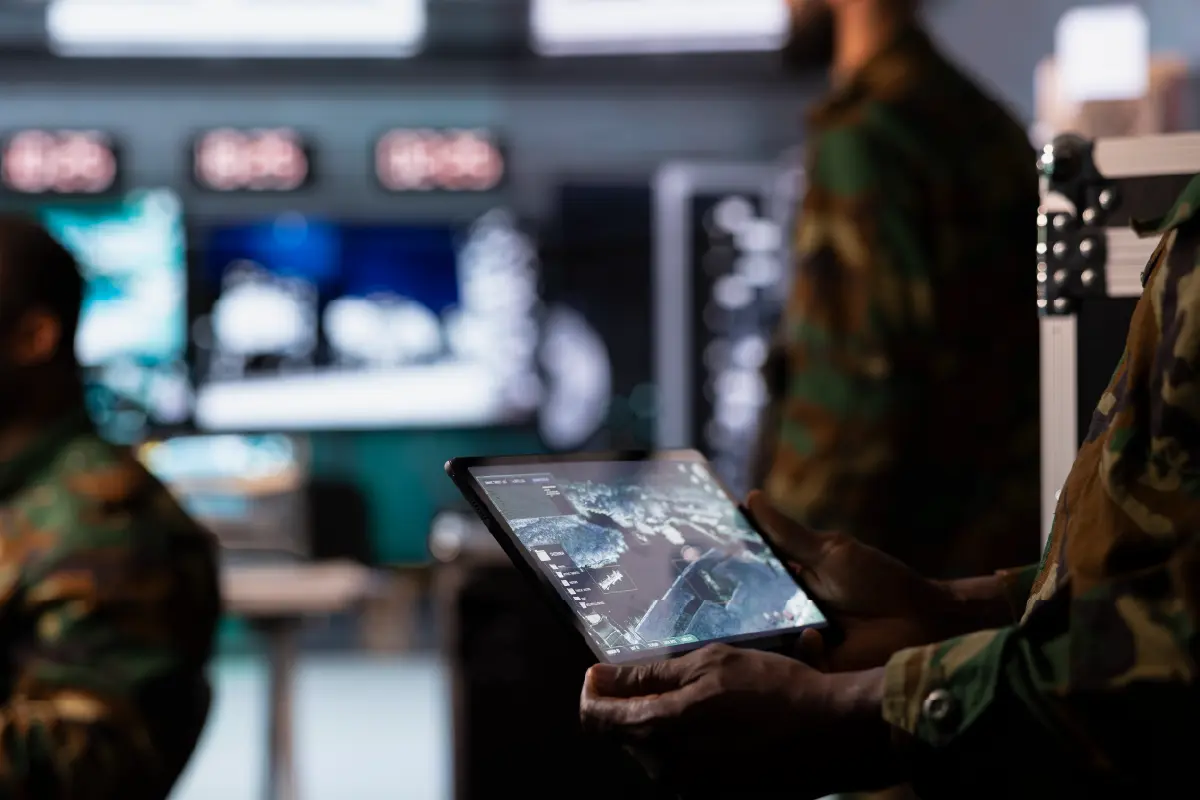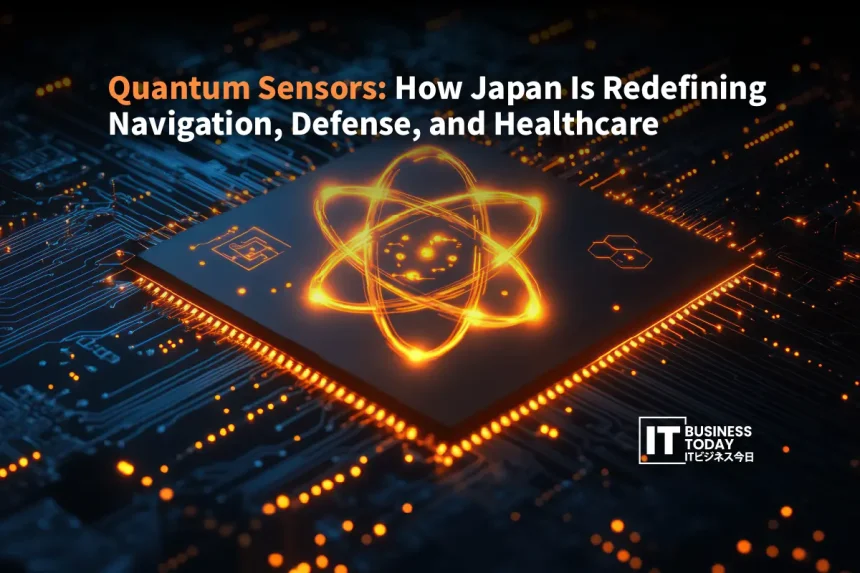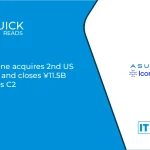高層ビルが立ち並ぶ街でGPSが突然使えなくなったり、敵に妨害されたりすることを想像してみてください。あるいは、乳幼児の小さな脳信号を追跡できない医療画像について考えてみてください。古典的な測定システムはすぐに限界に達します。量子センサーは違います。量子センサーは、重ね合わせやもつれといった原子の振る舞いを利用して、通常の装置では到達できない精度で物事を測定します。
日本はこの分野に力を入れています。日本には数十年にわたる物理学の専門知識があり、今、産業界に真の野心が芽生えています。政府、大学、企業が一丸となって取り組んでいます。量子センサーを本当に重要な分野に投入しようとしています。
衛星に頼らないナビゲーション・システム。ステルス潜水艦を追跡できる防衛ツール。 メディカル このような機器によって、医師はこれまで不可能だった方法で脳の活動を観察できるようになりました。これらの取り組みが一体となって、日本は原子時代の世界的リーダーとしての地位を確立しつつあります。量子の未来は、今日現実のものとなりつつあるのです。
こちらもお読みください: CXにおけるエモーションAI:カスタマージャーニーマッピングの新ルール
日本の量子リーダーシップを牽引する国家エンジン
日本はついに物理学の論文を書くだけにとどまらなくなってきました。何年もの間、日本は素晴らしい研究を行ってきましたが、今では量子センサーを実世界で使用できるようになりつつあります。
政府が最前線に立ち、主導的な役割を果たしています。経済産業省、内閣府、軍部はすべて、この技術が最も必要とされているすべての分野で普遍的に利用できるようにするために協力しています。
大学も立ち止まってはいません。東京大学や理化学研究所はプロトタイプを作り、コア技術をテストしています。そして産業界。
富士通と日立は、若い企業とともに、科学を現実のものとし、大量生産が可能な製品に変換するために奮闘しています。まとめると、官民のイニシアチブの組み合わせが強固な基盤を形成しているということです。量子センサーは、ナビゲーション、セキュリティ、ヘルスケアを変えようとしているのです。
日本は テクノロジー 研究室での実験から、人々が実際に使えるものへ。
GPSフリーの未来でナビゲーションを再定義
GPSはどこにでもありますが、完璧ではありません。信号が妨害されたり、フェイクされたり、あるいは消えてしまうこともあります。高層ビルが立ち並ぶ都市や水中、あるいは敵対的な環境では、GPSはしばしば失敗します。これは海運、ドローン、軍事行動にとって現実的な問題です。衛星だけに頼ることはできません。
この問題を解決するために、量子センサーが登場します。例えば、量子慣性計測ユニット(IMU)。IMUは原子干渉計を使用します。つまり、極めて高い精度で加速度と回転を測定します。船や飛行機、乗り物は、衛星がなくても現在地を正確に知ることができます。通常、時間の経過とともに起こるドリフトは劇的に減少します。そして、マグネティック・ナビゲーション(マグナビ)。超高感度量子磁力計が地球の磁場を読み取ります。それを詳細な地図と比較します。その結果、GPSをまったく必要としない測位が可能になります。
インパクトは大きい自律走行車は安全に移動できます。ドローンはトリッキーな都市景観を航行することができます。海上の艦隊は、衛星信号が消えても活動することができます。また、民間だけでなく アプリケーション.同じ精密センサーは、ステルス作戦や防衛に役立ちます。重力や磁場のわずかな変化を検知し、潜水艦や船舶の探知を回避するのに役立ちます。
富士通は新たなレイヤーを追加します。スーパーコンピューティングと量子コンピューティングを組み合わせて、人間のセンシングと因果関係の発見を強化しようとしているのです。これは、より良い分析、より速い予測、よりスマートなナビゲーションシステムを意味します。大阪大学と、 富士通 は量子コンピューティング自体も改良しています。位相回転中の位相角精度を向上させ、自動化された量子ビット手順を作成しました。理論的には、これらのコンピューターは従来のコンピューターが何年もかかる計算を数時間で実行できるようになりました。このようなパワーは、より正確なナビゲーションに直結します。ロジスティクスをより安全にし、防衛システムを強化します。日本は実験をしているだけではありません。GPSを使わないナビゲーションを実現するツールを構築しているのです。
現代の防衛における量子センサーによる領域の確保

防衛は、量子センサーが真の違いを生み出し始めている分野のひとつです。量子センサーはISR(Intelligence, Surveillance, Reconnaissanceの略)に大きな飛躍をもたらします。つまり、失敗したり見破られたりする可能性のある旧来の方法に頼ることなく、監視や追跡が可能になるということです。
潜水艦探知は最大のブレークスルーのひとつです。重力勾配計や磁力計は、巨大な弾道ミサイルを搭載した潜水艦によって引き起こされる地球の重力や磁場のわずかな変化を感知することができます。これは、日本が海を守る方法を変えます。アクティブソナーなしで船舶を追跡することができるため、センサーも艦隊もより安全になります。そして量子レーダー。これはまだ初期段階ですが、通常のレーダーでは見逃してしまうような、観測可能な低い目標を見ることができます。
国益は明らか。日本は外国の技術への依存を減らすことができます。GPSを使わないナビゲーションに加え、より自律的な防衛システムを構築することができます。
日立 は産業界に力を加えています。シリコン量子ドットを開発中で、1個の電子が量子ビットとして機能します。これはスケーラブルな量子コンピューティングに向けた大きな一歩です。彼らはまた、マイクロ波の位相を調整することで量子ビットを安定させる方法を発見しました。これは、量子コンピューティングを実用的で信頼性の高いものにするために不可欠なことです。
これらはすべて、日本が単にアイデアを試しているのではないことを示しています。日本は、防衛力を強化し、量子力学の未来に先んじることができる本物のシステムを構築しているのです。
ウェアラブル脳マッピングで医療を変革
従来の脳マッピングは常に厄介でした。MEGシステムはSQUIDセンサーに依存しており、このセンサーはかさばる極低温冷却が必要です。そのため、装置は大きく、固定されたものとなり、患者は自由に動くことができません。また、センサーが脳から少し離れているため、精度が落ちます。乳幼児や運動障害のある人にとっては、これは本当に大きな制限でした。
量子センサーがゲームを変えるOPM(Optically Pumped Magnetometer)は体温で動作します。OPMはウェアラブル・システムにフィットするほど小型です。乳幼児やじっと座っていられない患者が快適に着用できるヘルメットのような装置を想像してみてください。これらのOPM-MEGシステムによって、医師や研究者は、以前は不可能だった方法で脳の活動を捉えることができます。これにより、てんかん研究、認知症研究、メンタルヘルス治療に新たな可能性が生まれます。
日本はこの取り組みをリードしています。大学や企業が積極的にこれらのシステムを開発し、研究室での実験を臨床で使用できる実際のツールに変えています。量子ヘルスケアに対する日本の投資と協力は、この技術を理論的なものではなく実用的なものにしています。
三菱電機 が重要な役割を担っています。クオンティヌム株式会社、慶應義塾大学、ソフトバンク株式会社、三井物産株式会社、横浜国立大学、株式会社LQUOMと共同研究契約を締結。目標は、展開可能でスケーラブルな量子情報処理システムの構築。複数の量子デバイスを接続することで、大規模で実用的な量子コンピューティングの実現を目指しています。
それに加えて、三菱電機は量子制御システム技術を開発しています。これには仮想大規模 量子コンピューティング また、既存のインフラを保護するための耐量子暗号の研究も行っています。これらの努力は、脳マッピングを向上させる同じ量子技術が、ヘルスケアから国家安全保障まで、他の分野も強化する可能性があることを意味します。
多くの意味で、医療は日本の量子戦略の最も目に見える兆候です。研究、産業、技術が一体となり、人々の生活に真の変化をもたらすことを示しています。同時に、量子センサーは単なる実験ではなく、社会を変革するツールであることを証明しています。
日本の量子推進における前途と理研ファクター
日本は量子センサーの研究が盛んですが、それを製品化するのは容易ではありません。日本では、商業化や市場需要の創出という課題にまだ直面しています。その原因の多くは、日本のハードウェア重視の文化にあります。
理化学研究所 はこの問題を解決する中心的存在です。その量子コンピューティング・センターは、超伝導、光学、半導体の各プラットフォームに取り組んでいます。研究者たちは単に実験しているだけでなく、産業界に移転できるシステムを構築しています。また、分子を非常に速く制御することにも取り組んでいます。テラヘルツパルスを使えば、単一分子内に励起子を形成することができます。このような研究は、実世界で実際に使用できる量子センサーにとって非常に重要です」。
研究室での発見を人々が使える製品にするのは簡単なことではありません。チームワークが必要です。政府、大学、企業、すべての協力が必要です。日本がこのチームワークをいかにうまく管理できるかが、原子レベルの精度を世界が注目する技術に変えることができるかどうかを決めるでしょう。
経済と安全保障の新たな柱

日本の量子センサーの研究は、個別のプロジェクトの集まりではありません。ナビゲーション、防衛、医療をつなぐ国家的な取り組みなのです。この取り組みのあらゆる部分が、日本には計画があることを示しています。日本の技術を保護し、同時に経済を活性化させることを望んでいるのです。政府、大学、企業の協力が行われています。彼らの望みは、これらのセンサーが実験室から実際のアプリケーションに移行することです。
この原子レベルの技術をマスターすることで、日本は重要な インフラ とその従業員。同時に、強固で、正確で、革新に満ちた基盤を構築しています。この基盤は、この国を21世紀へと導き、技術面でもこの国をリードし続けることができるのです。







